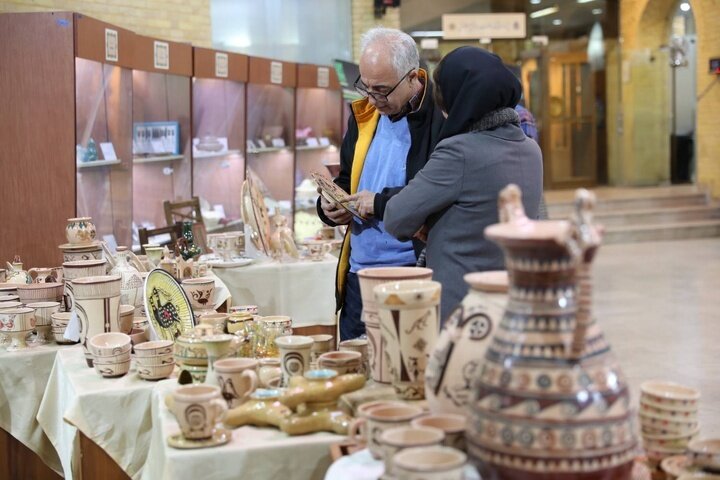Archaeologist breathes new life into millennia-old pottery patterns

TEHRAN - An Iranian archaeologist has breathed new life into the realm of handicrafts by reviving millennia-old patterns of Iranian pottery.
Narges Momeni, a senior expert in archeology, stated, “I have endeavored to simultaneously revive and recreate the ancient motifs of Iranian pottery and conduct research on the identification and history of these patterns.”
“By utilizing these ancient motifs in the production of handicrafts, I aim to contribute to the preservation of these cultural treasures.”
Momeni said the history of pottery in the Iranian Plateau spans at least eight thousand years. The inhabitants of the Iranian Plateau have created these patterns over thousands of years, considering their own ecosystem and natural elements, evolving in complexity, technique, composition, and artistry over time.
Emphasizing the significance and function of glaze in the quality of pottery, she said, “Our ancestors invented glaze for the longevity and enhanced beauty of pottery. Today, we bake these vessels in kilns as handicrafts, resulting in exquisite artifacts featuring ancient and traditional patterns of the Iranian Plateau, possessing both artistic and practical utility.”
Momeni highlighted the use of various techniques in pottery and painting on pottery throughout different periods in Iranian history, including the prehistoric era and Islamic periods.
She further added, “In addition to pottery, we design ancient patterns on ceramics, incorporating calligraphy and Persian-style floral motifs in the revival of these patterns, which have been well-received by buyers.”
The archaeologist mentioned, “This project focuses on pottery from various sites across the country, including the ones being excavated from north, south, northwest, southwest, and southeast regions.”
Of all human handicrafts, pottery is the oldest. Even writing, the actual communication method used to create this article, came after the first few pots. And like many other things, there is a theory that it was discovered entirely by accident.
In ancient times, people carried water in hand-woven baskets. The water, especially that of rivers, would contain some clay. When the clay dried out, it took on the shape of a basket. Eventually, people realized that these clay liners could be used as sturdy containers. They collected clay, shaped it, and baked it in the sun or hot ashes, sometimes decorating it with primitive tools. This is how the first clay pots (and thus all pottery) came into being.
It is believed that the first potter’s wheel was made in 3129 BC. BC from Sumer, although there is evidence that points to other places of origin. Precursors of the wheel, however, appeared as early as 4500 BC. So, an exact date is probably not possible. However, the idea of using a disc in making pottery was shared by many cultures.
Today, ceramics are heated using a kiln. It is generally accepted that the ancient Egyptians built the first kilns lined with bricks of clay and straw for insulation. They were also among the first to glaze their pottery before firing. Similar to its modern counterpart, this glaze gave the pottery a glass-like luster and texture and rendered the object non-porous.
AFM
Leave a Comment